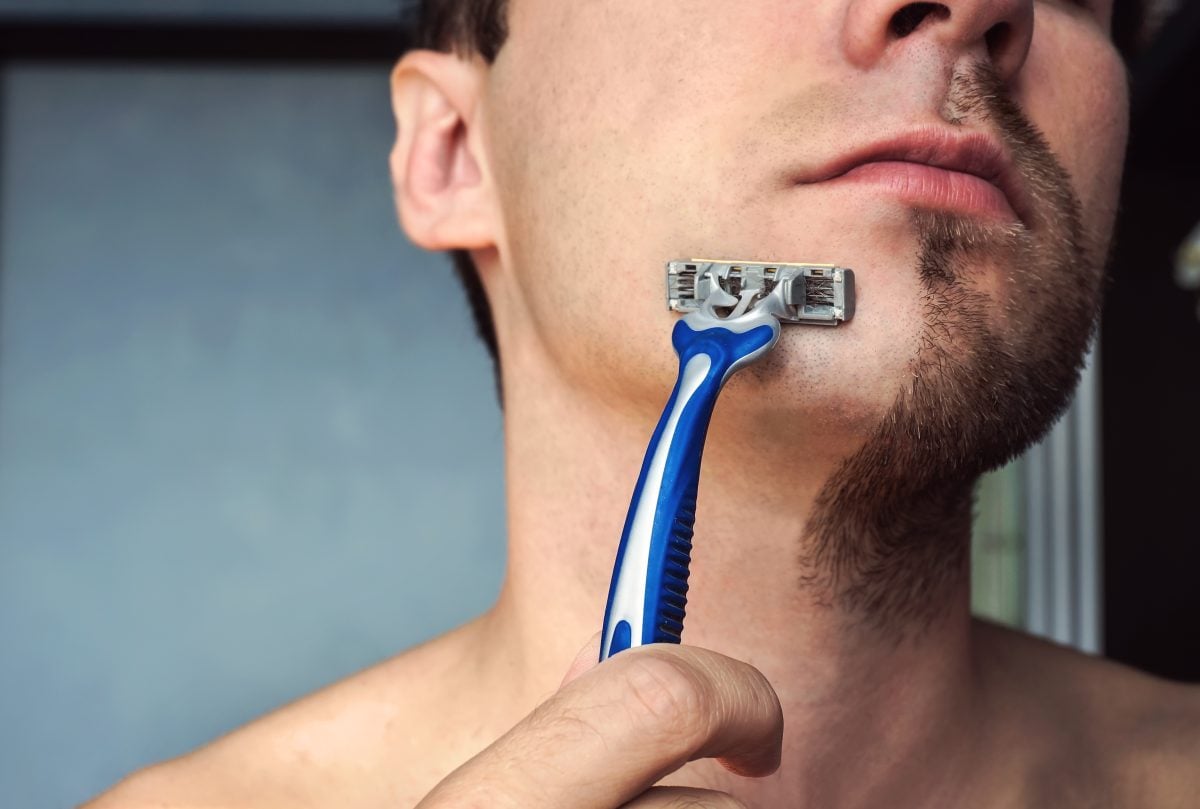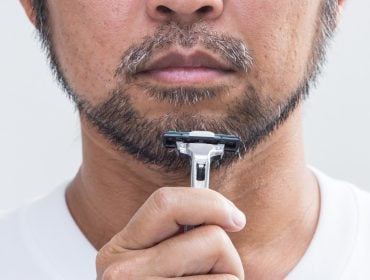
Razor Bumps | What are STDs? | Razor Bumps vs STDs | Diagnosis | Treatment Options
It’s common for us to encounter various skin conditions that can cause concern in our daily lives. Two such conditions are razor bumps and sexually transmitted diseases (STDs), which can manifest similar symptoms but are vastly different. Razor bumps, also referred to as pseudofolliculitis barbae, are little, irritated bumps on the skin that commonly occur after shaving. On the other hand, STDs are infections spread from one individual to another via sexual contact.
The importance of understanding the difference between these two must be considered. An incorrect self-diagnosis can lead to unnecessary stress or ignoring a potentially serious health condition. This article aims to comprehensively understand razor bumps and STDs, highlighting their differences, similarities, and the importance of proper diagnosis and treatment. By enhancing our knowledge of these conditions, we can better manage our health and well-being.
What are Razor Bumps?
Razor bumpsPseudofolliculitis Barbae
Razor bumps commonly appear in areas where people shave, such as the face, neck, legs, underarms, and bikini area. Men who shave their beards frequently are susceptible to razor bumps on their faces and neck.
Symptoms of razor bumps can include red or dark raised bumps, itching, tenderness, or even pain in more severe cases. The bumps may also become infected, look like pimples, or cause skin discoloration. While they are not harmful, they can be uncomfortable and may cause cosmetic concerns due to their appearance. Recognizing these signs is the first step toward adequately treating and preventing razor bumps.
What are STDs?
Sexually Transmitted Diseases (STDs), also referred to as Sexually Transmitted Infections (STIs) are primarily spread through sexual contact. Bacteria, viruses, or parasites cause more than 20 types of STDs. They can affect all genders of all backgrounds and economic levels, posing significant public health issues.
Among the STDs, certain diseases like Genital Herpes and Human Papillomavirus (HPV) can cause symptoms similar to razor bumps, leading to confusion in self-diagnosis.
- Genital Herpes is an infection induced by the herpes simplex virus. It causes painful blisters or sores in the genital area, which can be mistaken for razor bumps. These blisters can break open, leaving tender ulcers that can take two to four weeks to heal the first time they occur.
- Human Papillomavirus (HPV) is the most common STI, with certain types causing genital warts. These warts often appear as small bumps or groups of bumps in the genital area. They can be small or large, raised or flat, or shaped like a cauliflower.
The symptoms of these STDs can vary greatly, but they often include itching, pain, and the presence of bumps or sores in the genital area. Some people may also experience flu-like symptoms such as fever, body aches, and swollen glands. It’s important to remember that many STDs might not show any signs, making regular testing crucial if you’re sexually active.

Comparing Razor Bumps and STDs
When comparing razor bumps and STDs like Genital Herpes or HPV, there are some key differences and similarities to consider:
Symptoms: Razor bumps and these STDs can cause bumps or sores in the genital area. However, the bumps caused by razor bumps are generally small, inflamed, and may have hair visible at the center, while herpes sores are typically blisters that can break open and leave tender ulcers, and HPV warts may appear as a small bump or group of bumps that can be raised or flat, or cauliflower shaped.
Duration: Razor bumps tend to disappear within a few days to a week with proper care and avoidance of shaving. On the other hand, herpes outbreaks and HPV warts can persist for several weeks, and the viruses can remain in the body for life.
Appearance: Razor bumps usually appear in a linear pattern where the hair has been shaved, while herpes sores and HPV warts can appear anywhere in the genital area.
It’s also important to note that both conditions can co-exist, which can complicate diagnosis. For instance, shaving can cause an outbreak of herpes sores to spread, or razor bumps could become more inflamed if an STD is also present. Therefore, if you’re sexually active and notice bumps in your genital area, getting tested for STDs is crucial to rule them out or receive appropriate treatment. Self-diagnosis can often lead to misinterpretations. Always consult with a healthcare provider when in doubt.
Getting a Diagnosis
A healthcare professional should ideally carry out the process of distinguishing between razor bumps and STDs. The importance of medical consultation must be balanced, mainly because self-diagnosis can often be misleading and potentially dangerous.
Importance of Medical Consultation: A trained healthcare provider can accurately identify the cause of symptoms based on their appearance, location, and other accompanying signs. They can also ask pertinent questions about your medical history and sexual activity, which can provide essential context for a proper diagnosis.
Typical Diagnostic Tests for STDs: If an STD is suspected, your healthcare provider may recommend specific tests. For Genital Herpes, a swab of the affected area or a blood test can be used to detect the virus. For HPV, a visual inspection for warts is typically the first step, followed by further tests like Pap smears for women or HPV tests for both men and women, if necessary.
Misleading and Dangerous Self-Diagnosis: Self-diagnosis based on internet research or comparison with other people’s symptoms is often inaccurate and can lead to unnecessary anxiety or false reassurance. Misdiagnosis can delay appropriate treatment and potentially lead to further complications, including spreading an undiagnosed STD to partners.
While it can be helpful to understand the common symptoms and characteristics of conditions like razor bumps and STDs, any concerns about your health should be addressed with a healthcare provider. Early diagnosis and treatment are important to managing any health condition effectively. Check out our dedicated article for ingrown hair vs herpes.
Treatment Options
Whether you’re dealing with razor bumps or STDs, multiple options are available for treatment, ranging from home remedies to medical interventions.
How to Treat Razor Bumps at Home
Home remedies can be highly effective for treating and preventing razor bumps:
- Aloe Vera: Contains a soothing effect. Aloe Vera also helps reduce inflammation and accelerates healing.
- Warm Compress: A warm compress can open up your pores and allow trapped hairs to surface.
- Baking Soda Paste: Mixing baking soda with lukewarm water and applying it to the skin can alleviate irritation.
- Coconut Oil: It softens the skin and provides moisture, which can help prevent razor bumps.
- Exfoliation: A gentle scrub or brush can help free trapped hairs and reduce razor bumps.
- Hydrocortisone Cream: This can reduce inflammation and irritation associated with razor bumps.
Medical Treatments for Razor Bumps
If home remedies are ineffective, a healthcare provider may recommend medical treatments such as prescription creams, laser hair removal, or retinoids.
Treatment Options for STDs
The treatment for STDs depends on the specific disease:
- Genital Herpes: There is no cure for herpes, but antiviral medications can shorten outbreaks. They can also reduce the risk of transmission.
- HPV: There is no cure for the virus itself, but there are treatments for the health problems HPV can cause, like genital warts and cervical changes. Genital warts can be treated with prescribed medicine or removed by a doc.
Remember, it’s essential to consult a healthcare provider for any health concerns. While home remedies can be effective for conditions like razor bumps, STDs require professional medical treatment.
Prevention Tips
Preventioncure
Tips for Preventing Razor Bumps
- Proper Shaving Technique: Shave in the direction of hair growth, not against it. This reduces skin irritation.
- Use a Sharp Blade: Dull blades can tug at the hair, causing inflammation. Always use a sharp, clean blade when shaving.
- Hydration: Wet your skin with warm water before shaving to soften the hair.
- Shaving Gel or Cream: These products can provide a layer between the edge and your skin.
- Don’t Shave Too Closely: Try to leave a little bit of stubble to prevent the hair from curling back into the skin.
- Exfoliate Regularly: This can help free trapped hairs and reduce the chance of developing razor bumps.
Safe Sex Practices to Prevent STDs
- Use Condoms: Using condoms correctly every time you have sex can significantly reduce the risk of most STDs.
- Get Vaccinated: Vaccines are available to protect against STDs like HPV.
- Regular Testing: Regular STD testing ensures that you and your partner know your status and can take steps to protect each other.
- Limit Number of Sexual Partners: Reducing the number of sexual partners decreases your exposure to potential infections.
- Avoid Drug and Alcohol Abuse: Substance abuse can lead to risky behavior, including unprotected sex.
Remember, these prevention strategies are only effective when used consistently and correctly. Consult a healthcare provider for personalized advice.
Razor Burn Razor Bumps or STD
Understanding the differences between razor bumps and sexually transmitted diseases (STDs) is crucial for your health and well-being. While both can cause similar symptoms, such as redness, itching, and bumps, the causes and treatments are vastly different. We hope that this article helps you determine razor bumps or STDs.
Razor bumps are a common skin irritation caused by shaving, particularly in individuals with curly hair. They can often be treated at home with remedies like warm compresses, aloe vera, and exfoliation. At the same time, more stubborn cases might need medical interventions like prescription creams or laser hair removal.
On the other hand, STDs like genital herpes and HPV are infections transmitted through sexual contact. These require professional medical treatment and can have profound health implications if left untreated.
Prevention is vital in both cases. Proper shaving techniques and skincare can prevent razor bumps, while safe sex practices like using condoms, getting vaccinated, and regular testing are vital to preventing STDs.
However, self-diagnosis can often lead to confusion and misinterpretation of symptoms. If you’re unsure about any symptoms you’re experiencing, it’s important to seek advice from a doctor. They can diagnose accurately and guide you toward the most effective treatment options. Remember, finding and treating it early can make a difference in managing any health condition effectively. So, is it razor bumps or STDs? We hope this article helps!
Medically Reviewed by Colleen Ryan, MD on August 16, 2023
Secure and Confidential
STD testing services
The fastest results1 to 2 days

Tagged
- No Tags
Categorized As
- For Men
- For Women
- Popular
- STDs
Author: STD Check Editorial Team
At STDCheck.com, we go to great lengths to ensure quality content. We’re using our own collection of data. It is not bought or made up for “click-bait” purposes. We don’t entice traffic with cheesy graphics or raunchy headlines. Our information is to promote STD testing, educate people, let go of social stigmas, and bring awareness. We also provide a completely confidential atmosphere through private testing. When we produce an article, it is fact-based. We check it with medical advisors that approve it. Our staff consists of doctors and other medical professionals who peer review the content we make available on STDCheck.com. From all over the world, we have sourced the best and the brightest content developers, including medical professionals, marketing engineers, data scientists, content specialists, and media relations.





































